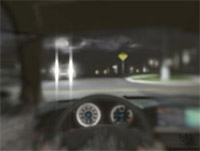
What is geriatric patients Central American?
 Vision changes occur as you grow older, however these modifications don't have to affect your life style. Understanding what to anticipate as soon as to find professional treatment will allow you to safeguard your eyesight.
Vision changes occur as you grow older, however these modifications don't have to affect your life style. Understanding what to anticipate as soon as to find professional treatment will allow you to safeguard your eyesight.
As you reach your 60s and past, you need to be alert to the indicators of age-related attention illnesses that may cause vision loss. Many eye conditions don't have any very early signs. They may develop painlessly, and you might perhaps not spot the modifications to your eyesight until the condition is very advanced level. Wise life style choices, regular attention exams and very early detection of illness can considerably boost your likelihood of keeping good eye health insurance and sight as you age.
You might not recognize that illnesses impacting other parts of the body make a difference your eyesight too. People with diabetic issues or hypertension (hypertension), or who will be taking medicines that have eye-related complications, are at best danger for building sight issues.
Regular eye exams tend to be even more important as you reach your senior years. The American Optometric Association suggests yearly eye examinations for everyone over-age 60. Visit your physician of optometry instantly if you notice any changes in your eyesight.
Age-related Eye and Vision Problems
When you look at the many years after you turn 60, numerous eye conditions may develop that may improve your eyesight permanently. The sooner these problems tend to be detected and treated, a lot more likely you can easily retain great sight.
Listed below are some eyesight conditions to be aware of:
- Age-related macular deterioration (AMD) is an eye disease that affects the macula (the center of the light-sensitive retina at the back of the eye) and causes main vision loss. Although small, the macula could be the area of the retina that allows united states to see details and colors. Pursuits like reading, operating, viewing television and recognizing faces all need good main sight given by the macula. While macular degeneration decreases main vision, peripheral or side vision continues to be unchanged.
- Cataracts are cloudy or opaque places in usually clear lens associated with eye. Based upon their particular size and area, they can affect normal eyesight. Usually cataracts progress both in eyes, but you can be worse as compared to other. Cataracts can cause blurry vision, decreased contrast sensitivity, dulling of colors and increased sensitivity to glare.
- Diabetic retinopathy is a state of being which happens in individuals with diabetes. It will be the outcome of modern damage to the little blood vessels that nourish the retina. These damaged arteries leak blood and other fluids that cause retinal muscle to swell and cloud eyesight. The illness frequently affects both eyes. The much longer an individual has diabetes, the greater the risk for developing diabetic retinopathy.
 Besides, the instability of a person's glucose dimensions over time make a difference to the development and/or extent of this condition. At its most unfortunate, diabetic retinopathy could cause loss of sight.
Besides, the instability of a person's glucose dimensions over time make a difference to the development and/or extent of this condition. At its most unfortunate, diabetic retinopathy could cause loss of sight. - Dry eye is an ailment in which someone creates not enough or poor-quality rips. Rips retain the wellness regarding the front surface of attention and supply obvious sight. Dry attention is a common and often persistent problem, especially in older grownups.
- Glaucoma is several attention diseases characterized by problems for the optic nerve leading to eyesight loss. People who have a household reputation for glaucoma, African Americans and older grownups have an increased risk of building the disease. Glaucoma is frequently painless and that can don't have any symptoms. As time passes, normally it takes away peripheral (part) eyesight.
- Retinal detachment is a tearing or split of this retina through the fundamental muscle. Retinal detachment most often takes place spontaneously because changes towards the gel-like vitreous substance that fills the back of the attention. Other causes include stress towards the eye or mind, health conditions like advanced level diabetes, and inflammatory eye disorders. If you don't addressed promptly, it may cause permanent sight reduction.
Driving Safely After 60
IIf you are 60 or older, driving a vehicle might progressively tough. Age-related sight changes and eye conditions can adversely influence your operating abilities, before you may be aware of signs. Some age related eyesight modifications that frequently influence seniors' driving are:
- Not capable see road signs because plainly
- Difficulty seeing objects in close proximity, just like the automobile tool panel or roadway maps
- Difficulty judging distances and speed
- Changes in color perception
- Problems witnessing in reasonable light or at night
- Difficulty adjusting to brilliant sunshine or glare from headlights
- Experiencing a loss in side eyesight
These tips will allow you to stay safe whenever driving, specifically during the night:
- Use extra caution at intersections. Numerous collisions involving older drivers happen at intersections considering a failure to produce, specially when taking a left turn. Look very carefully both in directions before proceeding into an intersection. Turn the head frequently whenever operating to pay regarding decreased peripheral sight.
- Reduce your rate and limit you to ultimately daytime driving. If you are having trouble witnessing during the night or your eyes have a problem dealing with the glare of oncoming headlights, decrease and get away from operating during the night.
- Avoid using eyeglasses and sunglasses with wide frames or temples. Eyeglasses with broad temples (part hands) may limit your part eyesight.













